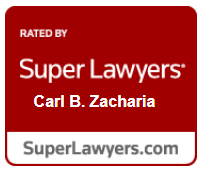The Coronavirus Aid, Relief, and Economic Security (“CARES”) Act was passed into law on March 27, 2020 and is a significant tool for small businesses to utilize during the COVID-19 pandemic in the United States. “Social Distancing” mandates, along with required business closures, have left many small businesses with employee lay-offs, minimal income, and an inability to meet business expenses and obligations. You can access the Paycheck Protection Loan Application HERE and learn more information, including the checklist of items needed to apply HERE.
The CARES Act allocates $350 billion to assist small businesses in keeping their employees on the payroll and meeting their expenses by way of a 100% federally guaranteed loan to businesses in the United States who meet certain criteria.
The purpose of this article is to outline the major points of this Act – who can qualify, what is required to become eligible for the loan, how much can be borrowed and how businesses can use this loan, and details on the forgiveness of this loan.
What Businesses Are Eligible
Most significantly, these loans apply to small businesses (fewer than 500 employees), a 501(c)(3) with less than 500 employees, along with sole proprietors, independent contractors, and self-employed individuals. It is important to note that the 500-employee requirement includes employees of any status (full-time, part-time, etc).
In general, these loans are intended to be utilized for payroll costs, employee salaries (including other forms of compensation) and business expenses, such as utilities and rent.
Requirements for Eligibility
Most significantly, lenders are not looking for other previous loan applications for businesses, collateral for these particular loans, or a personal guarantee for the loan. This is crucial as business loans historically require most of these things, including a personal guarantee, to provide a loan. Other disaster relief loans available prior to the CARES Act loan had many of these requirements and did not include loan forgiveness.
In order to obtain a loan, the business must provide a good faith certification that the loan request is necessary to allow for ongoing business operations. Also, the business must show that the loan will be used to retain their workers, maintain payroll, and/or make rent, mortgage and utility payments. The business borrower also must show that they do not have a current application pending for a loan that is similar in amount and purpose to the CARES Act loan. This requirement applies to loans from February 15, 2020 to December 31, 2020, although there is an opportunity to consolidate these loans if necessary.
Determining How Much Can be Borrowed
These CARES Act loans can be up to 2.5 times the Borrower’s average monthly payroll costs, not to exceed $10 million. Which begs the question – how are “payroll costs” calculated? The calculation includes taking includable payroll costs, and subtracting from those excluded payroll costs. Included costs are salaries, wages, commissions, or similar compensation of employees, which also includes cash tips. Additional includable costs are payment for vacation, medical, sick, parental, or family leave; payment for group health care benefits, including insurance premiums; payment of retirement benefits; and payment of local/state tax for the compensation of employees.
If an independent contractor, sole proprietor, or self-employed person is applying, they will need to provide proof of wages, commission, income, net earnings, or other similar compensation. This amount cannot exceed $100,000 in one year, and this number is prorated based on the covered period for the loan.
Exclusions or deductions from payroll costs include the compensation of an individual employee whose salary is in excess of $100,000 per year, prorated for the period between February 15, 2020 and June 30, 2020. Additionally, income taxes, payroll taxes, and railroad retirement taxes can be excluded.
Paycheck Protection
The CARES legislation is also being referred to as “paycheck protection.” These current loans to businesses, which can ultimately be forgiven if certain criteria are met, are backed by the Small Business Administration but are administered through banks. The purpose of paycheck protection is to help businesses retain their employees at their current rates of pay.
If businesses are applying through their banks, they can be expected to have to gather the following information:
- 12 months of payroll reports prior to applying – including gross wages for each employee, which includes the officers if they receive W-2’s;
- Paid time off for each employee;
- Vacation pay for each employee;
- Family medical leave pay for each employee;
- State and Local taxes assessed on the employee’s compensation for each employee;
- 1099’s for 2019 for independent contractors that would otherwise be an employee of the business;
- Documentation showing the total of all heath insurance premiums paid under a group plan by both the owner and any employees; and
- Documents evidencing the sum of all retirement plan (401(k), Simple IRA, SEP IRA) funding that was paid by the owner, but not including funds originating from the employees from their paycheck deferrals.
Loan Forgiveness
Perhaps the most significant portion of this legislation is that the loan can be forgiven if certain requirements are met, which makes the loan more like a grant. In order to calculate the amount of the loan that can be forgiven, a formula is used considering the sum of the payroll costs, mortgage interest payment, rent, and utilities paid by the business borrower during the eight-week period beginning on the origination date of the loan. If the business borrower laid off employees or reduced the wages/salaries of its employees between February 15, 2020 and June 30, 2020, the amount of that business’ loan forgiveness is reduced by any reduction in employees retained compared to the business’ historical levels, and the decrease in pay of any single employee beyond 25% of their historical compensation. The loan forgiveness cannot exceed the principal.
Also significant is that any portion of the loan that is forgiven is excludable from taxable income.
The goal of these loans is to ensure workforce stabilization. Therefore, if personnel were laid off or salaries were cut between February 15, 2020 and April 26, 2020, those changes will NOT be counted if the business subsequently rehires the number of personnel or returns the salary levels before June 30, 2020.
If you have questions about applying for these loans for your business, please reach out to us via our contact page at PittsburghElderLaw.com or by phone at 724-942-6200.






